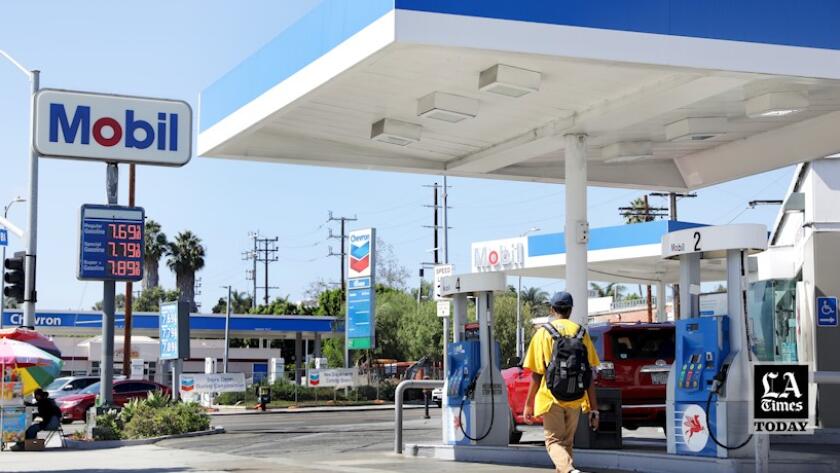California’s gas-car phaseout brings turmoil to mom-and-pop gas stations
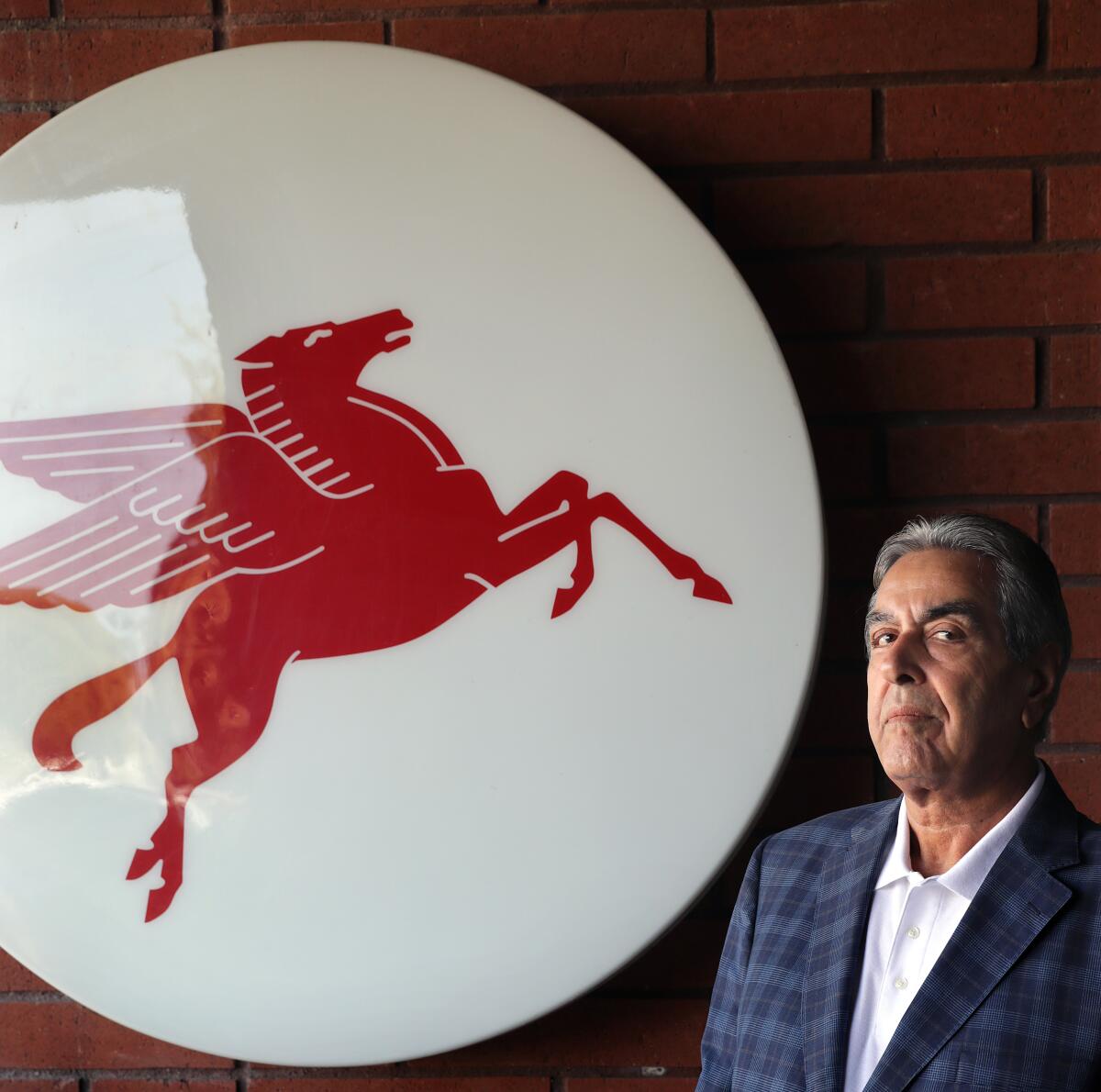
- Share via
It was hailed as a landmark decision for the environment: The California Air Resources Board voted in August to require that all new automobiles and light trucks sold in the state be zero emission by 2035.
The move, aimed at tackling climate change, has been cheered by many. Just not mom-and-pop gas station owners.
In interviews with The Times, independent gas station owners said the state mandate will expedite the demise of their businesses. And they make up a significant part of the state’s fueling infrastructure: A little more than 5,000 such stations are scattered across California, according to National Assn. of Convenience Stores data.
“Most of the independents will be put out of business — completely out of business,” said Charles Khalil, who owns two gas stations in the L.A. area and is bracing for a shakeout ahead of 2035. “We are all going to suffer through it.”
He and other owners predict many mom-and-pop operators will, in the years ahead, sell their properties to real estate developers or large gas station chains that can afford to upgrade the sites with electric vehicle chargers. Space limitations and the high cost of installing chargers — a high-capacity version can cost $150,000, including all associated expenditures — make it infeasible for some owners to update their properties for an electric future.
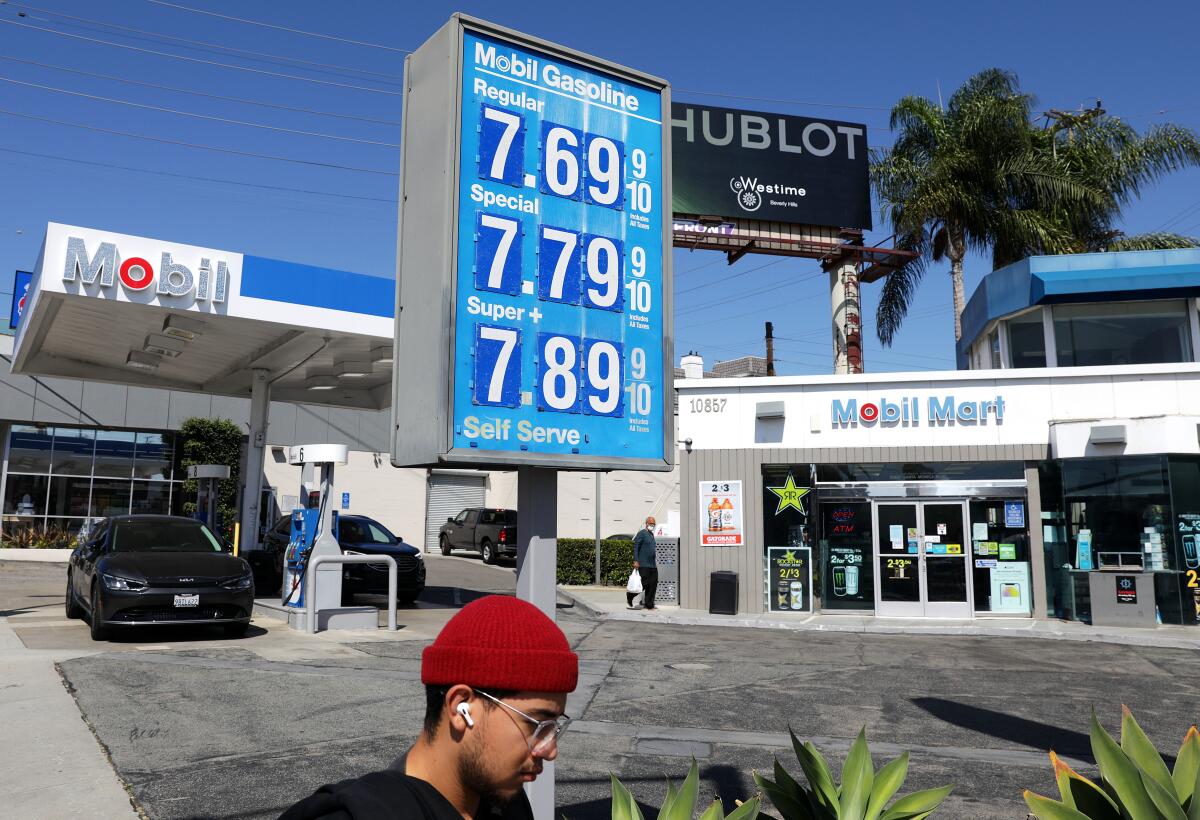
Another local independent gas station owner, Adnan Ayoub, said the zero-emission mandate “is not going to be fun for a lot of us.”
“When the gas [cars] go away, I don’t know how many customers I would lose,” said Ayoub, who operates a station in Glendale and has been in the business for 33 years. “I’m kind of on the way out, looking for something else to do.”
Electric vehicle industry consultant Loren McDonald said the move by the resources board, a powerful department within the California Environmental Protection Agency, may not have much obvious immediate effect. But a significant number of closures will eventually come.
“It will be steady for a few years,” said McDonald, who consults for EV charging companies and convenience store chains, among others. “But ... in the last five years, as we start to approach the 2035 deadline, these owners are going to start bailing.”
How many mom-and-pop gas stations might California lose in the years ahead?
Using five years of annual data from the National Assn. of Convenience Stores, McDonald estimated that nearly half of the state’s 5,081 mom-and-pop gas stations would close by 2035. NACS defines these stations as those that include a convenience shop and are owned by a single-store proprietor — hence the “mom-and-pop” designation. (A caveat about the estimate: McDonald’s model assumes stations will begin closing at a rate of 3% annually, increasing to 6% a year — but over the next 13 years the loss of stations is unlikely to be linear.)
Under the CARB mandate, there will be a tapering of sales of gas-powered cars over the next 13 years: 35% of new autos must be zero emission by 2026, 68% by 2030 and 100% by 2035. (The mandate allows 20% of what the state calls “zero-emission” vehicles to be plug-in hybrids, which can either run on electric batteries or on fossil fuels.)
But owners of vehicles with internal combustion engines will still be permitted to operate or resell them after 2035. With the average lifespan of a car in the U.S. pegged at about 12 years, there will be a need for gasoline for decades to come. Still, that demand will decline dramatically. CARB predicts that the 24 million California-registered cars and light trucks powered by fossil fuels will drop to a bit under 16 million by 2035.
McDonald expects gas stations owners to be affected not only by the new state rule, but also by the proliferation of increasingly efficient gas-powered and hybrid vehicles that achieve ever-loftier miles-per-gallon ratings. Simply put, some consumers will need to fill up for gas less frequently, and others not at all.
Plenty of challenges lie ahead as California mandates zero-emission cars, including cost and access to charging.
Girding for turmoil, gas station owners gloomily point out unresolved issues related to the new CARB rule. For example, how would California generate the electricity needed for the millions of new EVs that would be sold here? (According to the resources board, there are already 1.13 million zero-emission vehicles registered in the state.) And yet even as they raised this and other questions, owners said that they supported changes to help the environment.
Not every gas station operator intends to get out of the business. Take Bob Reed, 80, of San Mateo, Calif. He’s run the same station and service center on Palm Avenue in the San Francisco Bay Area city since 1973. “In my life, I will never sell it, because it took me a while to get this,” he said.
Reed knows a sea change is coming to the industry, but it’s one that his descendants will have to tackle, he said, lamenting: “My son and grandson will be the ones who are going to feel it.”
The real estate play
There’s a saving grace for gas station owners who are anxious over their prospects: location, location, location.
Because stations are typically in high-traffic areas, many are situated on parcels that would be coveted by real estate developers should owners decide to sell. Ronnie Givargis, investment sales broker at commercial real estate services firm Northmarq, said that there is strong demand for these sites, a large swath of which are “located on irreplaceable corners.”
“If your site is located in a desirable area, repurposing the property will be simple and profitable,” he added, noting that such parcels could be ideal for drive-through restaurants, banks and high-volume retailers.
Khalil’s stations are on Santa Monica Boulevard in Westwood and on Beverly Boulevard across from the Beverly Center, the latter a spot known for high gasoline prices. And the 52-year veteran of the business is leaning toward eventually selling to a developer.
“The reason we are holding tight to those locations is just because of the real estate,” said Khalil, who also runs a Torrance-based convenience store marketing consulting firm. “Gas stations are on the best corners, no matter what town, what area. Those people are holding on a bit so they could sell it to developer. That’s what I would do.”
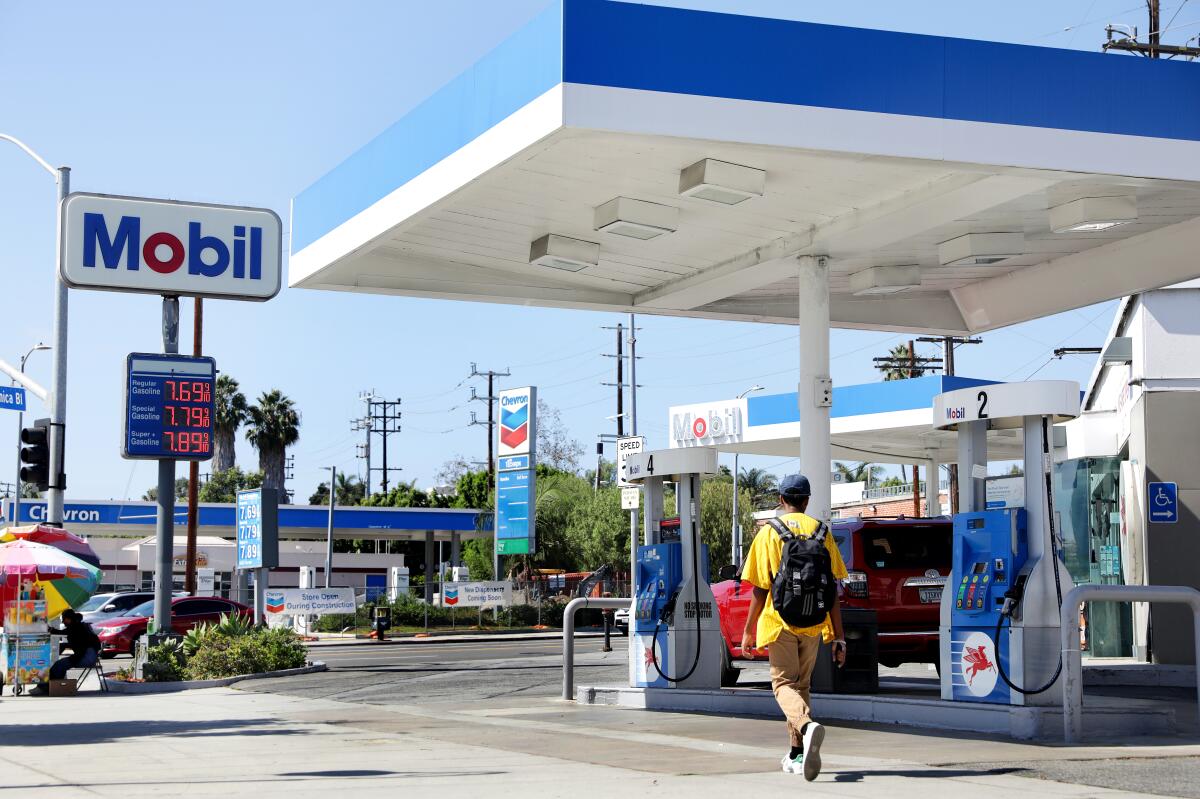
Ayoub said that he also sees the development potential of the site that currently houses his station — but can’t make a move until his contract with a gasoline distributor expires in 2025.
“My options are either to sell to someone else and let them worry about it, or wait until my current contract expires ... and develop the property into something else,” he said.
Not all operators own the parcels their gas stations are situated on, and those proprietors who lease their properties could find themselves in an even more tenuous position than their land-owning peers who may reap a windfall in a sale.
Givargis said he’s noted “individual owners wanting to sell their stations now more than in the past,” and partly attributed this increase to the 2035 mandate. There are, however, environmental contamination issues that can crop up when a former gas station site is repurposed.
“There may be a need to go through a remediation process to clean up the site and make it habitable for future businesses,” Givargis said.
Such parcels might be coveted by real state developers or large gas station chains that would outfit the properties with EV chargers. One local chain is Long Beach-based United Pacific, which owns more than 500 convenience store gas stations and also distributes fuel.
“The larger groups can scale more efficiently and therefore turn better profits than a one-off operator can,” Givargis said.
An electric future
Many of the mom-and-pop gas stations will have a role to play in the EV-only environment — they may just have new owners.
It is not as if some independent owners haven’t tried to keep up with the times. Ayoub said that he had considered adding electric vehicle chargers at his station, but that a quote for the work was not economical.
Indeed, for a mom-and-pop owner, McDonald said the installation of a fast DC charger typically costs about $150,000 including construction and infrastructure work, whereas a large chain could add chargers at a lower per-unit cost due to economies of scale.
Carl Pancutt, chief executive of San Pedro-based Cleantek, an EV charging engineering and construction firm, said that adding a high-powered DC charger can cost from $70,000 to $100,000 for the equipment, and an additional $30,000 to $100,000 for the construction, depending on existing infrastructure. Pancutt, who also heads EV Range, a company that owns and operates an EV charging network, said it could cost more than $500,000 to add four DC dispensers to a site.
There are limited local, state and federal subsidies that gas station owners may tap to defray the cost of adding chargers, but accessing the incentives can require navigating a byzantine bureaucracy — an endeavor that some hire consultants to manage. More aid will soon flow from the federal government — a result of the $1-trillion infrastructure bill signed by President Biden in November.
Despite the high costs, EV Range has worked with some independent gas station owners to add chargers, including one in Walker, Calif. Helping independent gas station owners “provide an amenity to the new wave of drivers is important,” Pancutt said. “And it’s important to them for the next phase of their business.”
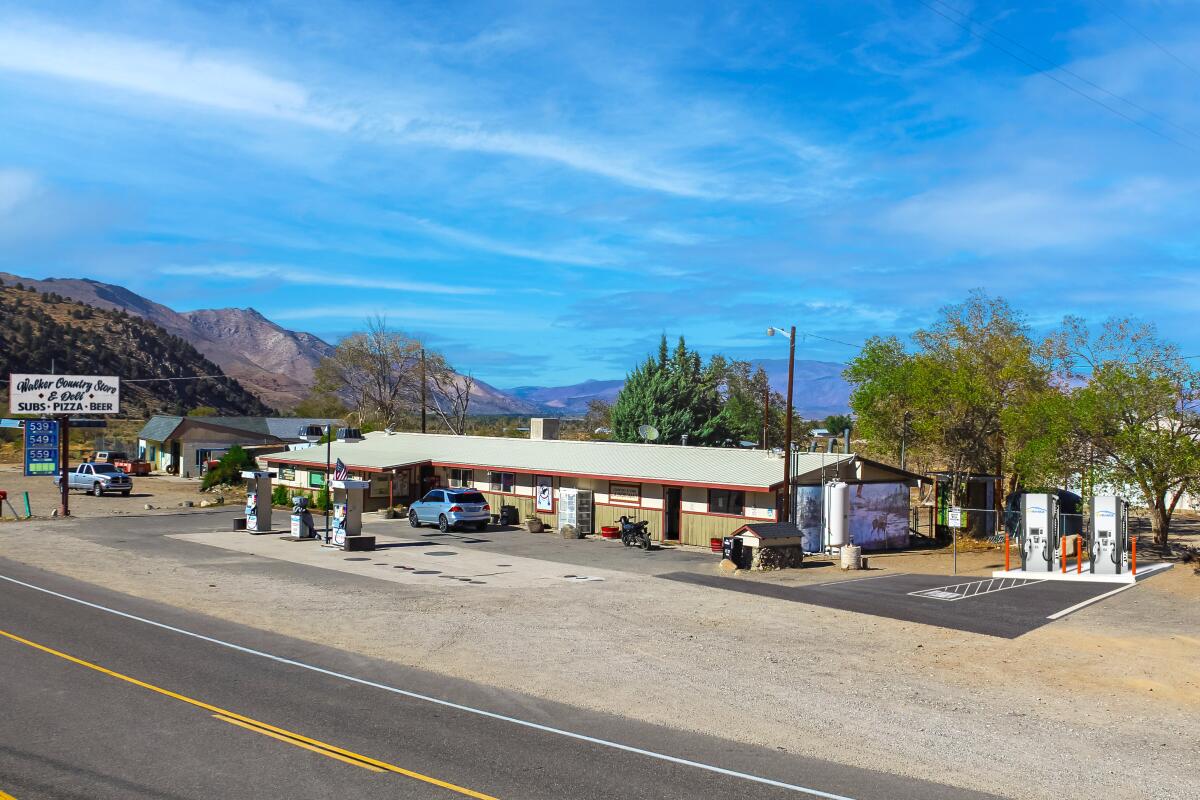
Still, once installed, it may take two to five years for EV chargers to become profitable, McDonald said. That’s due in part to their infrequent use. McDonald said that gas station EV chargers are typically used just 5% to 10% of a 24-hour period.
Then there’s the issue of “throughput,” an industry term for the number of customers that can be served at a single dispenser. A gas pump has a much higher throughput than an EV charger, because a gas-powered vehicle can be filled up in 10 minutes or less, whereas it could take more than 40 minutes to charge an electric vehicle to near its capacity using a DC fast charger.
But a potential benefit of a long wait for an EV fill-up is that customers would spend more time at a gas station property. While there, patrons might be inclined to fork over more money in the convenience store, perhaps enticed by fresher coffee and tastier pastries than are typically offered today.
However, to accommodate such visits, owners might need to upgrade their facilities — yet another expense.
“Smaller, local ones — if they see their business is going to be dying in 10 years — they are probably not going to spend the capital to add seating for 10 people inside and outside,” McDonald said.
Besides the matter of cost, there’s another potential issue — one Khalil ran into when he looked into adding chargers to his station near the Beverly Center: a lack of space.
A few years ago, he grew curious about the possibility of converting some of his gas pumps at the roughly 14,000-square-foot station on Beverly. “I said, ‘I will be ahead of the game,’” he said.
But an EV consult who visited the station had bad news. “They tell me, ‘You don’t have enough space to convert your property,’” Khalil recalled.
Pancutt confirmed that EV chargers require significant real estate. For starters, there’s the additional electrical infrastructure, which alone can occupy a piece of land up to three parking spaces in size, he said. Also, the first charger installed must comply with Americans With Disabilities Act standards, necessitating a 12-foot-wide parking stall with a 5-foot-wide aisle. From there, additional stalls would be 9 or 10 feet wide.
“That’s another hurdle,” Pancutt said.
Despite their pique, some gas station owners acknowledged that environmental realities require action.
“If experts say the environment requires we do it, then we move on,” Khalil said. “In the meantime, I am a little bit melancholic about it.”
But Khalil — who has spent more than half a century in the gas station business — is already prepared for the electric future, at least personally.
He drives a Tesla Model X.
- Share via
Watch L.A. Times Today at 7 p.m. on Spectrum News 1 on Channel 1 or live stream on the Spectrum News App. Palos Verdes Peninsula and Orange County viewers can watch on Cox Systems on channel 99.
More to Read
Inside the business of entertainment
The Wide Shot brings you news, analysis and insights on everything from streaming wars to production — and what it all means for the future.
You may occasionally receive promotional content from the Los Angeles Times.


